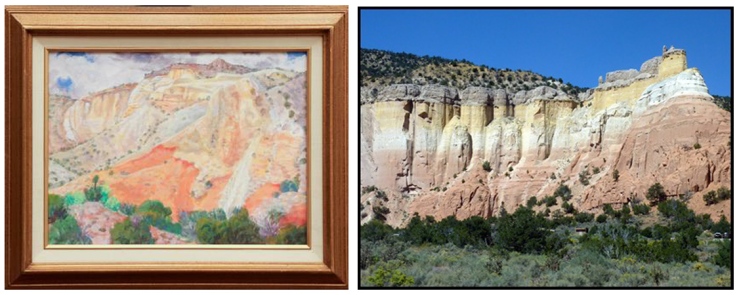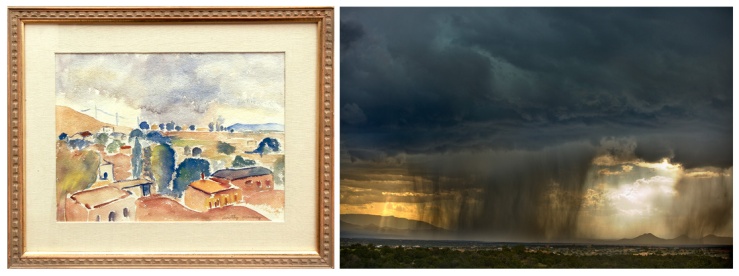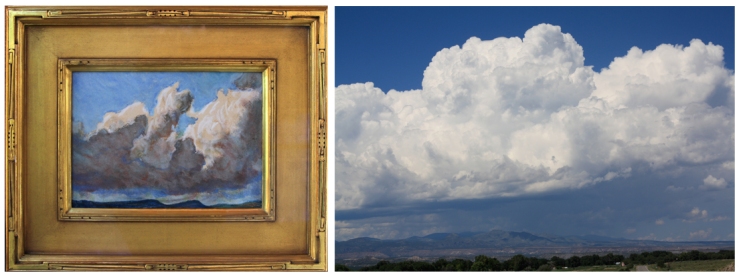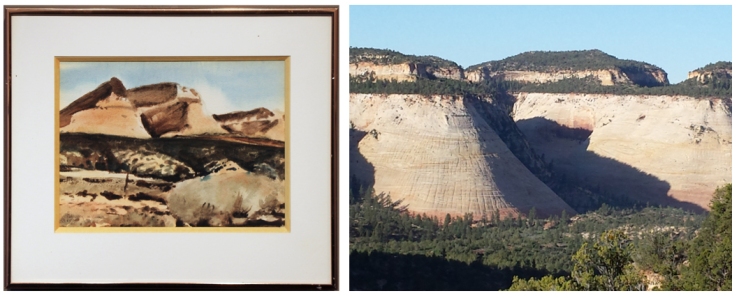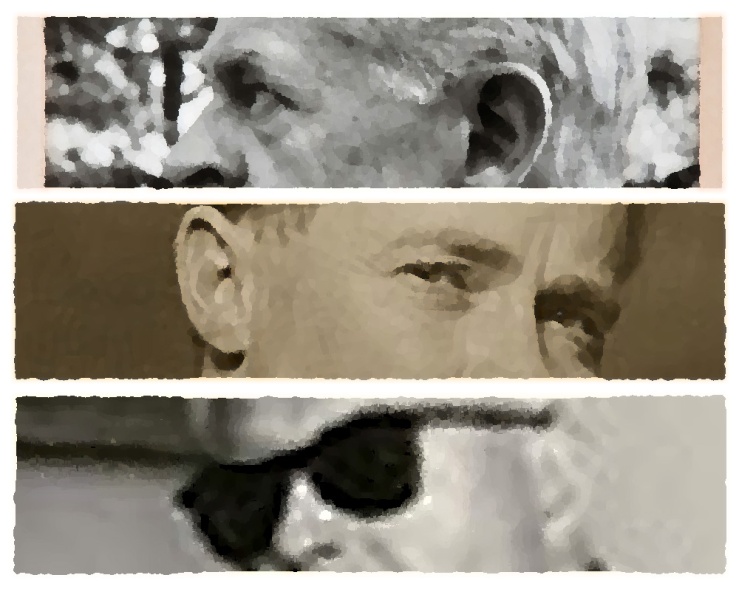 From top: Cowles, Dasburg and Hondius
From top: Cowles, Dasburg and Hondius
You’d be surprised at how often we find New Mexico links in the biographies of our historic artists, even if they never lived here. The latest paintings to appear on our walls are good examples. Gerrit Hondius and Russell Cowles were celebrated modern artists in New York: both exhibited at the Museum of Modern Art and the World’s Fair, and their works are now part of the permanent collections of numerous major museums. Their mutual friend Andrew Dasburg, whose career also took off in New York, would move to Santa Fe in 1921 and help usher in the region’s modernist period.
It goes to show that New Mexico was a major player in the American modernist movement, far beyond Georgia O’Keeffe’s significant contributions. Read on to learn more about these influential artists and their ties to the Land of Enchantment…
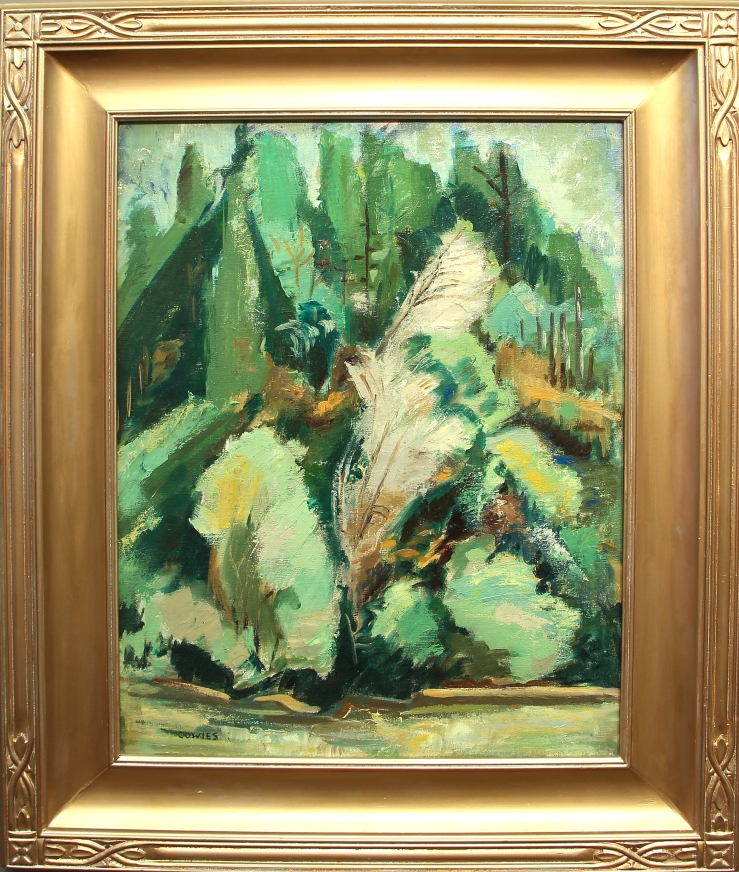
Russell Cowles, Untitled (Modernist Landscape), Oil on Panel
“When an artist sees something he wants to paint, his first step should be to look- to look long and sensitively- to feel what nature has to say,” said Russell Cowles (1887-1979). Wherever the modernist set up his easel—from New Mexico to East Asia—he followed this philosophy with the passion of an artist and the intellectual focus of a scholar.
The Iowa-born artist graduated from Dartmouth College in 1909. He studied painting in Paris and Rome, drawing inspiration from the artwork of Cezanne and Gauguin. Cowles returned to the United States in 1920, exhibiting his artwork at the Metropolitan Museum of Art soon after. In 1925, he received a medal from the Art Institute of Chicago. These honors marked the beginning of a long and illustrious career that took Cowles as far as China to study with a master of Chinese painting, and Bali to experiment with abstract painting.
Cowles began living in Santa Fe for part of each year in 1930, and befriended John Marin, Andrew Dasburg, Marsden Hartley and other New Mexico modernists. He received a prize at the World’s Fair in New York City in 1937, and his artwork appeared in LIFE Magazine in 1948. He died in New York City in 1979.
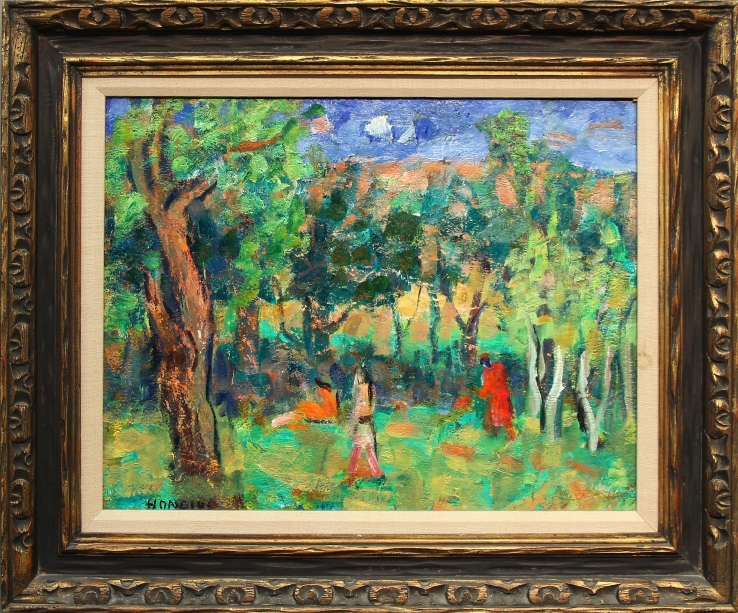
Gerrit Hondius, Untitled (Modernist Landscape), Oil on Panel
Gerrit Hondius (1891-1970) was born in the Netherlands and studied painting at the Royal Academy in The Hague. It was there that he developed a passion for Georges Rouault and the French expressionists, but he found a true match for his style and creative energy in New York City.
Hondius moved to New York in 1915, and studied at the Art Students League with Max Weber and Andrew Dasburg. He first caught the eye of the art world with a massive WPA mural in brilliant Fauvist and expressionist hues. In the mural, colorful city people tangled with masked figures, clowns and ballerinas, inviting Old World allegorical figures to frolic in the capital of New World modernity.
In the following years, Hondius split his time between New York and Provincetown, Massachusetts, and exhibited at the Whitney Museum of American Art, the World’s Fair, the Museum of Modern Art, Rockefeller Center and over fifty other venues across the United States and Europe. His artwork is in the permanent collections of the San Francisco Museum of Art, the Whitney Museum and other institutions across the world. His wife Paula donated his sketchbooks, letters and other personal effects to the Smithsonian Institution after his death.
Check out our website to learn more about Gerrit Hondius and Russell Cowles, and connect with us on Facebook, Twitter and Flickr for daily gallery news.
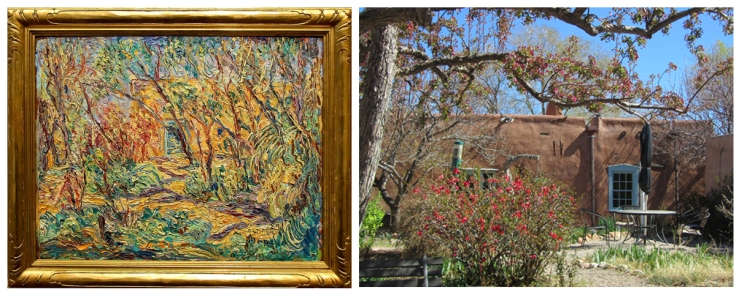 This Alfred Morang painting may show artist Olive Rush’s garden on Canyon Road. Rush and Morang were close friends. Compare to the photograph at right.
This Alfred Morang painting may show artist Olive Rush’s garden on Canyon Road. Rush and Morang were close friends. Compare to the photograph at right. 


